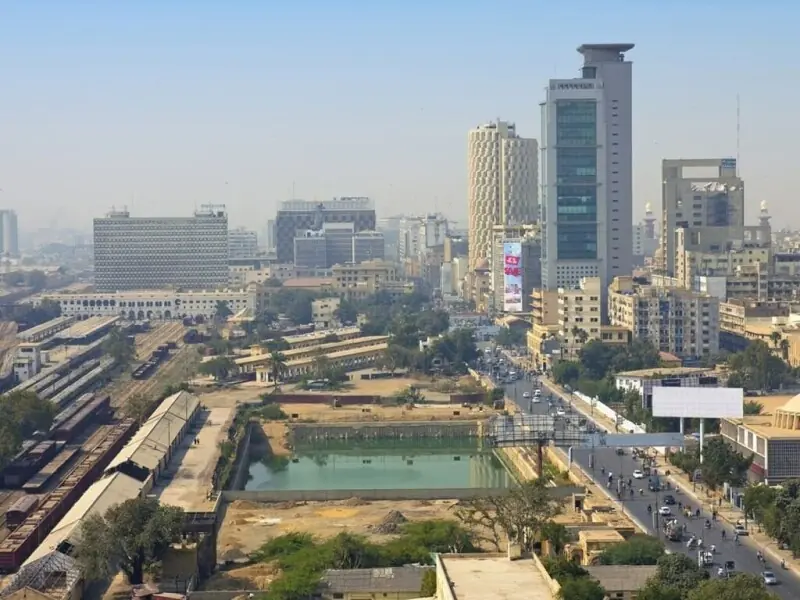Experts have warned of a major financial strain on Karachi’s industries and small-and-medium enterprises in the wake of the National Electric and Power Regulatory Authority’s (NEPRA) recent decision to revise downwards the multi-year tariff (MYT) for K-Electric (KE) in which the regulator cut the rate by Rs7.6 per unit.
Earlier this week, NEPRA in a series of determinations that included transmission, distribution, supply, and generation, reduced KE’s MYT for 2024-2030 from Rs39.97 to Rs32.37, a decision analysts said would cause a massive financial loss to the power utility that serves the nation’s largest city.
Govt devising plan to resolve KE-Nepra tariff dispute
A plethora of analyst reports and industrial associations’ statements followed, as it was revealed that customers would face an additional charge of roughly Rs1.6 for electricity consumed in FY24. On top of the PHL surcharge Karachi customers already face (a fee applied to electricity bills to help manage the power sector’s growing circular debt), many experts called the treatment “unfair”.
Similar sentiments were voiced at a webinar organised on Saturday (October 25) by the Policy Research Institute of Market Economy (PRIME) titled ‘Karachi’s Energy Security: Challenges & Opportunities’. The session was moderated by Ali Ehsan – Chief Development Officer at PRIME (Policy Research Institute of Market Economy).
Moonis Alvi, KE CEO, said the MYT should have reflected KE’s ground realities as it supplies power in a complex urban setting. His remarks were in reference to massive migration towards Karachi that has resulted in slum settlements, and poor law-and-order situation.
Despite these challenges, KE has significantly reduced aggregate technical and commercial losses from around 45% to below 20%, the CEO added.
Nepra tariff row: KE Board may opt for global arbitration
Alvi remained optimistic and said the issues can be addressed through constructive engagement with NEPRA and the government.
He clarified that KE’s cost of generation was lower and the company was more efficient when compared with the national grid and XWDISCOS (ex-WAPDA distribution companies) in “an apple-to-apple comparison”.
Among the panelists was former FBR chairman Shabbar Zaidi who termed NEPRA’s decision financially unviable, predicting that within two years KE could face bankruptcy.
KE’s Alvi terms NEPRA’s revised tariff ‘unprecedented’, warns of operational strain
He said KE’s current Rs 4 billion profit could turn into an Rs 81 million loss due to the tariff cut. He added that no DISCO can be privatised under such a regime.
However, Alvi remained optimistic and said KE will continue to serve Karachi even as the new tariff structure brings certain challenges.
Meanwhile, Haroon Shamsi, representing industrial stakeholders, criticised what he called governmental “ad hocism” in energy policymaking. He noted that Karachi’s industries are already burdened by high-capacity payments, now compounded by retrospective fuel charge adjustments (FCA) and the PHL surcharge of Rs. 3.23/kWh—despite the city’s exclusion from circular debt.
“Industries have already closed their financial books and filed tax returns. Do we all go back and refile everything?“
Shamsi warned that small and medium enterprises (SMEs) would suffer the most, as larger industries could set up captive power plants while smaller players lacked that capacity. He also questioned whether KE could sustain service levels under financial stress, hinting that longer outages and slower fault rectification may follow.
Zeeshan Ali, an energy sector professional, highlighted the technical dimension of energy security.
“If KE’s investment plans face a chokehold, it prevents modernization and grid upgrades,” he said. “This isn’t just a tariff issue—it’s a threat to Karachi’s future power reliability.”
Industrialist and energy sector expert Rehan Javed called NEPRA’s reversal of its own decision incomprehensible. “It took 2.5 years to come to a mutual decision after consultation across all stakeholders and just two months to undo it, without new evidence.”
Responding to a panelist’s comment on increased communication, Moonis Alvi echoed the need for better public understanding of how consumer tariffs are set by the government.
Panelists collectively called for urgent structural reforms in the power sector to restore sustainability and investor trust. Political decision-making must give way to sustainability and competitiveness, emphasising that tariff-setting authority should be market-driven rather than controlled by a regulator under government influence. Ending the uniform tariff regime was a mutually echoed sentiment as it distorts market signals and penalizes efficient utilities.


